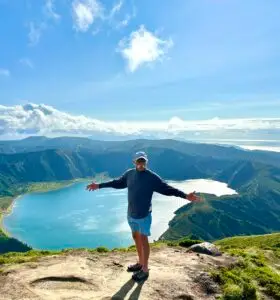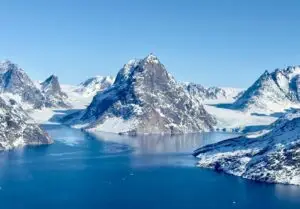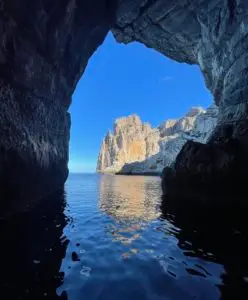My wife, Dorita, and I were invited to visit the walled city of Dubrovnik, Croatia and then go sailing for 7 days through the coastal islands Northwest of Dubrovnik with 4 old friends & 4 soon to be new friends, in mid-September. It seemed like an adventure, even though the our climber friends who put the trip together, told us there would be little climbing, but a lot of sailing & hiking.
After a long day one getting there, we toured the walled city of Dubrovnik the next morning. It’s quite a scenic place and a UNESCO World-Heritage site, but still a “living-city,” where the locals deal with hoards of tourists, no cars, and steep stairs on most side streets. Dubrovnik is also known to fans of the HBO series Game of Thrones, as King’s Landing, so that brings in still more tourists. There were a lot of tourists, but the “old-town” is pretty amazing for folks that like history.

The history of Croatia and The Balkans is convoluted and somewhat dark, but one of the later dark chapters was when Croatia was fighting for independence from what was once Yugoslavia in 1991. The remainder of the Yugoslavian army besieged and bombarded greater Dubrovnik & the old walled city. Our 70- something tour-guide lived through the siege and told us stories during our tour about the destruction and suffering the residents lived through. Towards the end of the story, she smiled and said “it was the skinniest I have been, since I was a teenager.”
When I looked up the history of that nasty little war, the big bombardment day for Dubrovnik recorded this:
The heaviest bombardment of the Old Town started at 5:48 am on 6 December. The Old Town was struck by 48 – 3.2″ missiles, 232 – 3.2″ and 364 – 4.7″ mortar shells, as well as 22 wire-guided missiles
The war is over, Croatia is still mostly Catholic, English is the second language, everywhere we went folks were friendly, and everything was clean and tidy. Croatia has also joined the European Union & is a NATO member. It’s a great place to tourist about.
On day two, our group hiked endless steps, then a pleasant trail, up to a Napoleonic era fort above the city and a great view. Late that afternoon, we left Dubrovnik in our chartered 45′ catamaran for 7 days of sailing and hiking, with an occasional swim or snorkel along the way.
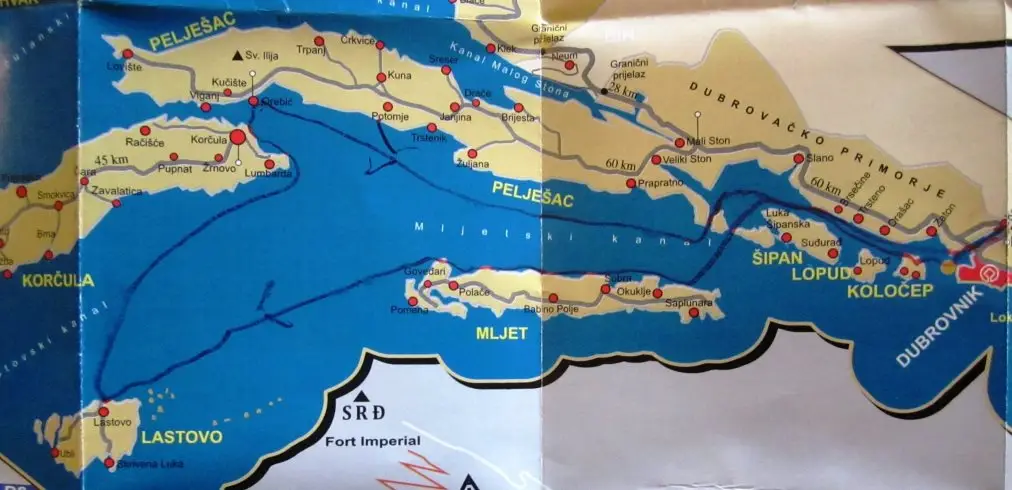
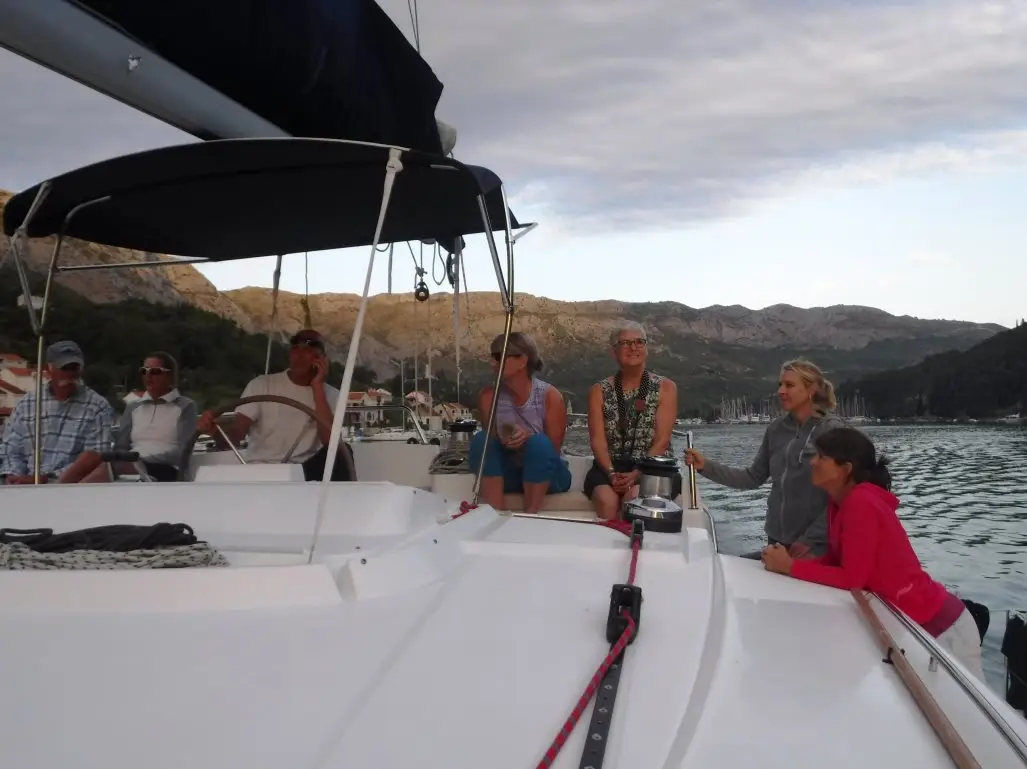
Left to right, Stuart, Cathy, Captain Danielle, Dorita, Lisa, Katie, Co-trip sponsor, Kim
We slept and ate most meals on our boat, and enjoyed exploring islands along the way. We always found friendly locals that spoke English and liked our money.
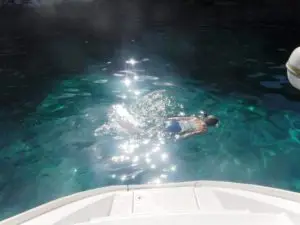
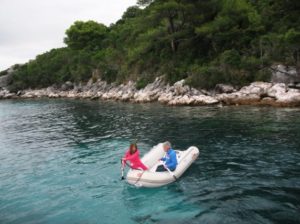
Dorita enjoying a snorkel and our co-trip sponsors Kim and Pete ferrying a stern line to shore.
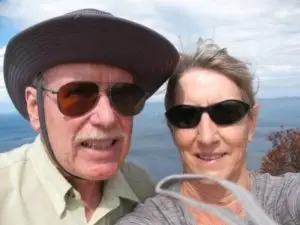
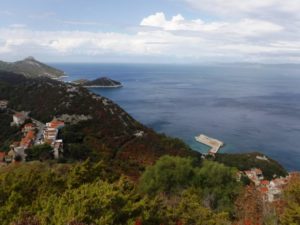
On Lastovo, our friends did a 12 mile hike that included hiking the summit of the highest mountain on the island. Dorita and I broke off, did some group grocery shopping in the island center town of Lastovo, hiked up to a windy high point, and only achieved about 6 miles and 1,000′ vertical. It was ok, since my old left knee had been hurting for the last 3 weeks from geriatric overuse. Above is our windy day summit shot and the view north with the town of Lastovo to the left.
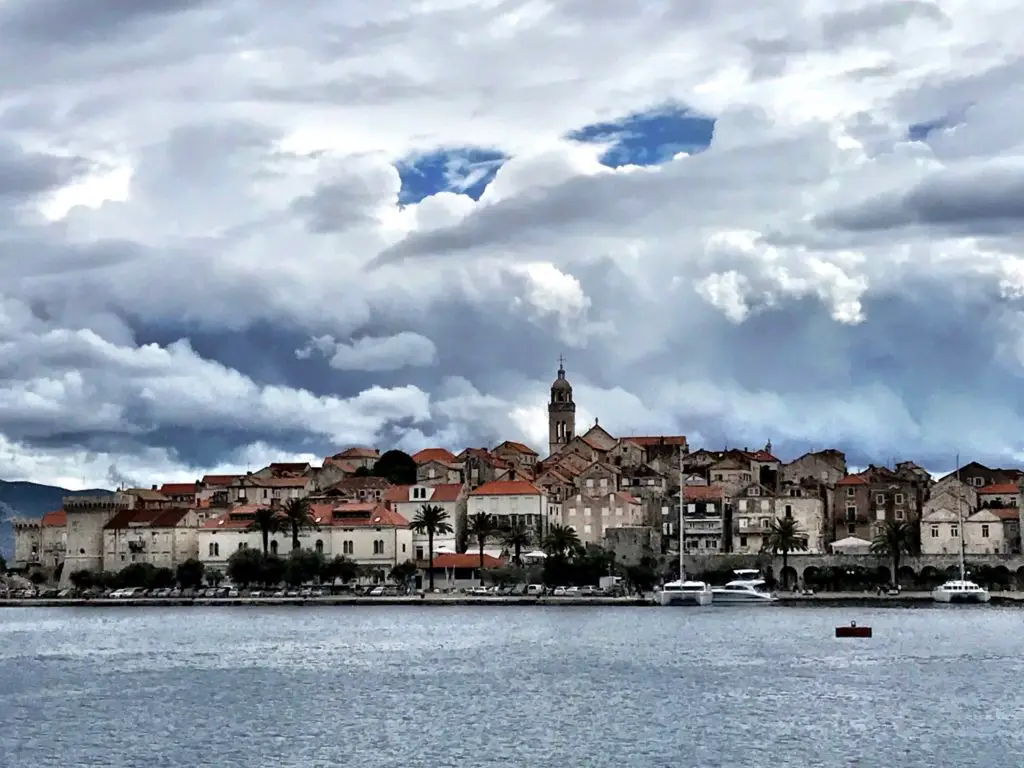
From Lastovo we headed to the island of Korcula. We had some rough seas on our way there, but other than Captain Danielle, everyone got some sleep. I finally couldn’t take the pitching of the boat in our small cabin & shortly after daybreak, I went up to the main cabin, where Pete & our cook & logistics manager Stacia were mostly awake. I settled in, started feeling a little nauseous, & finally borrowed a Dramamine from Stacia. Happily, no-one on the trip ever got seasick!
The walled city of Korcula (Korcula, Island)
Our Captain dropped us all off at the municipal dock and the group set off around the bay with another ambitious hike in threatening conditions planned. Dorita and I dropped out after a while & returned to the walled city for exploration & lunch. Most of Korcula, inside the wall, is off limits to vehicles, but is still a “living-city” with narrow streets, lots of steps, & drying laundry hanging above the streets. It is also much visited by tourists & although there are bunches of restaurants along the top of the city wall, they were crowded. We found a table at a pizza place & enjoyed a great lunch for a reasonable price.
It then rained heavily, our friends returned from their hike, & we found everyone for an afternoon round of spritzers, then we were off to our boat, a nearby anchorage, dinner & celebration. Thanks to Stacia, the eats were great every night on our boat.
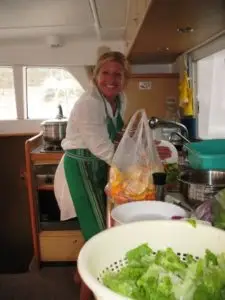

After a rough night near Korcula, the waters again calmed, but a crisis arose when Stacia discovered we were out of propane-gas for the stove. We headed to the nearby port-town of Orebic for gas & hot caffeinated drinks, which we all needed after a rough night.
After paying to park our boat at the marina in Orebic, we tourists found a pastry shop for our hot caffeinated fluids fix & a yummy or two. Then we sauntered back to the boat to find that our bosses had received new propane & made more coffee.
The hikers were off to climb the mountain that looms over the port, Mount Ilija, with a planned round-trip of about 12 miles & 3,200 vertical feet. Here’s a view of Mt. Ilija from the stony beach in town:
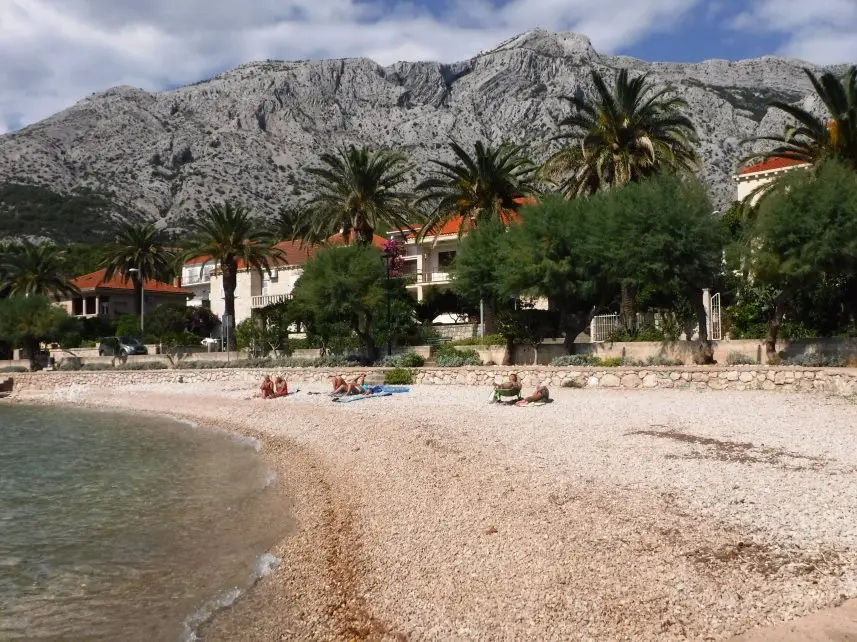
Dorita & I decided on an alternative hike up to the Franciscan Monastery of Our Lady of Angels, from the 15th century, which sets on the edge of a cliff a couple miles above the port & Captain Danielle thought that hike was about right for him too. We walked the local malecon along the sea for about a 1/2 mile, cut through a hotel, & found a steep trail that took us up to the little-used road to the monastery.
Here’s the malecon & a view of the city of Korcula from the monastery:
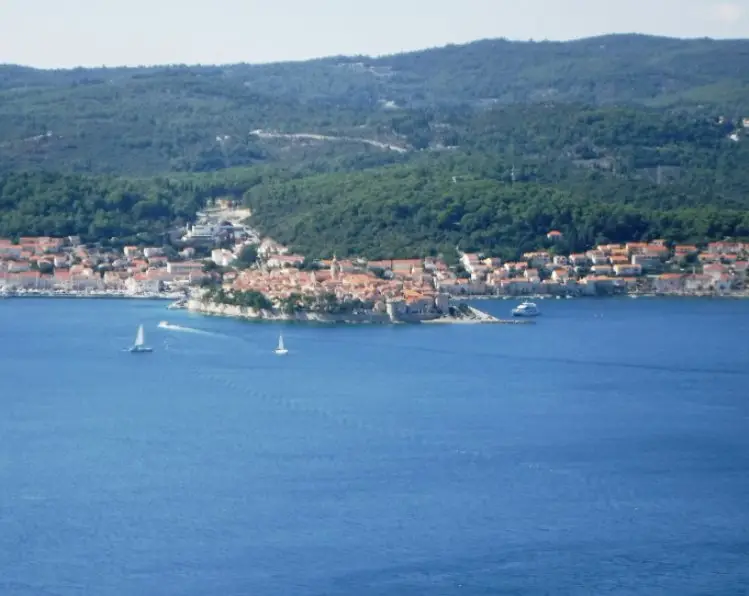
After paying to tour the monastery, the attendant bustled inside & brought us a bowl of local grapes as a welcome treat. There is a small maritime museum there, with models, photos, & paintings of ships that plied the local seas. Since Orebic sets on a peninsula that connects to the mainland, it has a long maritime history of commerce & ferryboats to the nearby islands. Nearby vineyards also produce some of the better-known Croatian wines.
Here’s the plate of grapes we shared & some nearby grapes still on the vine:
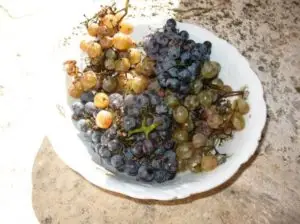
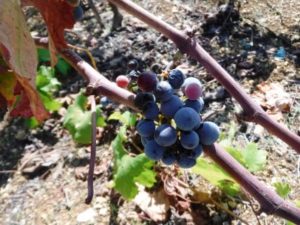
Speaking of grapes:
Our group immersed themselves in Croatian wines, & some outside Prosecco, beer, Gin, etc. The white wines went down fine, but the red wines fought back.
A Dubrovnik wine shop proprietor prescribed two bottles of the local high alcohol red wine, a Dingac. It was about 15.5% alcohol and when I mentioned I liked high-alcohol California Zinfandels, she leaned in and knowingly replied: “Yes, your Zinfandels, came from our Dingac vines.” It was pretty yummy, but after a while, had a slightly bitter aftertaste. We bought more though, at about $10.00 a bottle. Otherwise, the other local red wines, mostly Postups, didn’t have much bouquet and were on the acidic side, but on a sailboat, who really cares? Here’s Wikipedia on Dingac and the other local wines we mostly consumed.
Dingač is a wine growing region on the Pelješac Peninsula in the Dalmatian region of Croatia that is part of the larger, Coastal (Primorska) Region. Situated on the southwestern facing slope of the Zabrada mountains between the small villages of Trstenik and Podobuče, it is a highly regarded area for growing the autochthonous Croatian red wine grape, Plavac Mali.[1]
Like the neighboring Postup region, the land is very rugged karst with little top soil. This attribute, in addition to the level of sunlight (2800 hours annually), 45 degree slope, and weather make for ideal red wines growing conditions which are planted from sea level up to 300 m.[1] The wines derived from this area are eligible for a “stamp of geographic origin” if they meet a series of strict requirements[2] and can reach upwards of 17.6% alcohol
We made it back to the marina by about 1:00 PM and the Captain went off in search of lunch, while Dorita and I ate the lunch we had packed for the hike, at a shady bench. Then we hiked around the small town, Dorita got to enjoy shopping, & we ended up at a nice grocery store which had more of our favorite Dingac wine, which is produced nearby.
After the mountaineers returned, it was decided we would stay the night in our berth & not have another adventure at sea. No-one argued and we all adjourned to a nearby bar for a round of spritzers to celebrate, before dinner on the boat & a beautiful sunset.
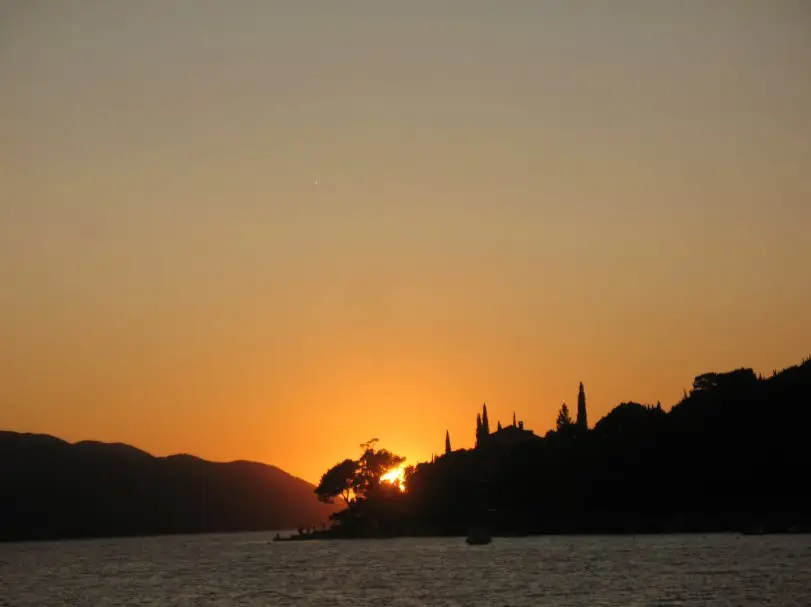
The next day we took off early for our return to Dubrovnik with a favorable wind at our backs. Danielle shared the wheel, with Katie, Lisa, and Dorita. Dorita had last sailed back in the 1990’s, but she remembered her skills with some coaching, and steered us for an hour, while Danielle took a lunch break and exclaimed that we were doing 10.5 knots.

Dorita breaking speed records!
We stopped in scenic coves twice for swimming, and snorkel breaks and made it into the Dubrovnik marina just at dark. Then had dinner and one last night on the boat. The next day, we left the boat behind and for our last night of our tour, we settled into a nice hotel and had dinner together in Old Town Dubrovnik!


